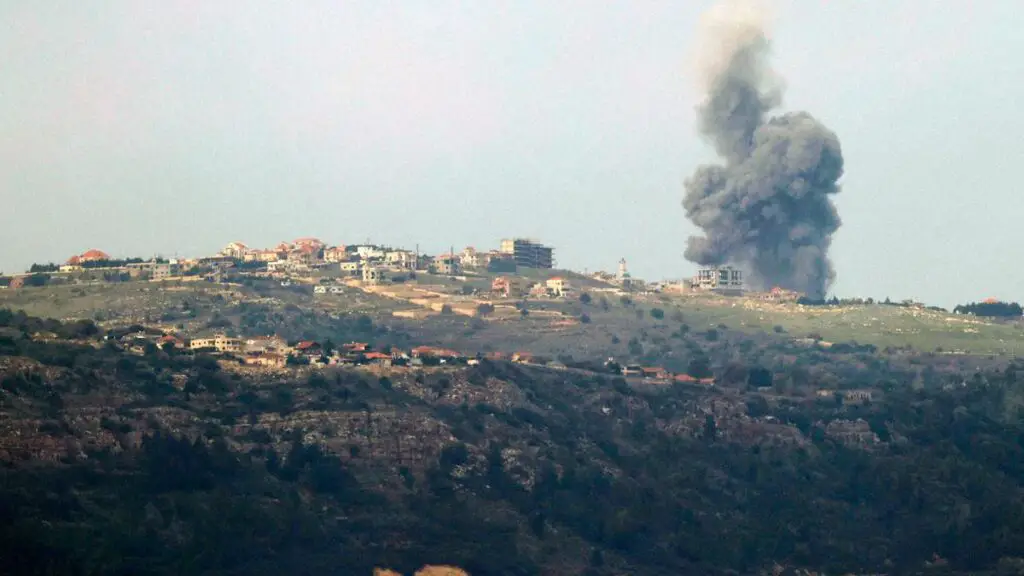Amid the ongoing cross-border tensions and fighting between Israel and Hamas militants in Gaza, two Hezbollah fighters were killed in southern Lebanon by an Israeli drone strike on January 21. The incident has heightened the conflict between the two sides, with Hezbollah trading fire across Lebanon’s southern border in support of Hamas.
Israeli Drone Strike in Southern Lebanon
The two Hezbollah fighters were targeted in the latest strike, adding to the dozens of Hezbollah fighters that Israel has previously targeted in the region. While Israel’s military has not officially commented on the incident, security sources confirmed that the attack resulted in casualties.
Residents and security officials reported another drone strike near the village of Kafra, resulting in two deaths and several injuries. This escalation of violence has further strained the already volatile situation along the border.
Hezbollah’s Support for Hamas
Hezbollah’s involvement in the conflict stems from its support for Hamas in the Gaza Strip. The exchange of fire between Hezbollah and Israeli forces has been part of a broader strategy to aid Hamas in its ongoing conflict with Israel. This support has intensified the already tense situation in the region.
Impact of the Conflict
The conflict has had dire consequences for both sides, with casualties reported on all fronts. Hezbollah has claimed that its campaign has stretched Israeli forces and driven thousands of Israelis from their homes, while also aiding Palestinians in their struggle against Israel. However, the cost of this support has been high, with casualties on both sides and escalating intensity in recent weeks.
Understanding Hezbollah’s Involvement
To gain a better understanding of Hezbollah’s role in the conflict and its support for Hamas, it is essential to explore the history and objectives of the organization. Through an in-depth analysis, the motivations behind Hezbollah’s actions and its impact on the Israel-Hamas war can be better comprehended.
This detailed exploration can provide valuable insights into the dynamics of the ongoing conflict, shedding light on the complexities of the situation and the implications for the region as a whole.
While the conflict between Israel and Hamas has garnered significant attention, the involvement of Hezbollah adds another layer of complexity to an already volatile situation. The interplay of these factions and their respective strategies has far-reaching implications for the Middle East, making it crucial to examine the broader context of the conflict.
Linking the Conflict to Broader Regional Dynamics
By linking the Israel-Hamas conflict and Hezbollah’s involvement to broader regional dynamics, a comprehensive understanding of the geopolitical factors at play can be achieved. This holistic approach allows for a more nuanced analysis of the conflict, taking into account the multifaceted relationships between various actors in the region.
Moreover, by examining the geopolitical implications of the conflict, it becomes possible to assess its impact on regional stability and security. This broader perspective illuminates the interconnected nature of conflicts in the Middle East, underscoring the need for a comprehensive and integrated approach to addressing regional challenges.
Looking Towards a Sustainable Resolution
Ultimately, the goal of understanding the conflict and its various dimensions is to work towards a sustainable resolution. By identifying the root causes of the conflict and addressing the underlying issues, it becomes possible to chart a path towards peace and stability in the region.
Efforts to promote dialogue, foster understanding, and address the legitimate concerns of all parties involved are essential in moving towards a sustainable resolution. This comprehensive approach requires a commitment to diplomacy, conflict resolution, and the promotion of mutual respect and understanding among all stakeholders.
In conclusion, the conflict between Israel, Hamas, and Hezbollah has far-reaching implications for the Middle East. By examining the conflict through a holistic lens, understanding its broader regional dynamics, and working towards a sustainable resolution, it becomes possible to address the complexities of the situation and pave the way for a more peaceful and stable future in the region.

